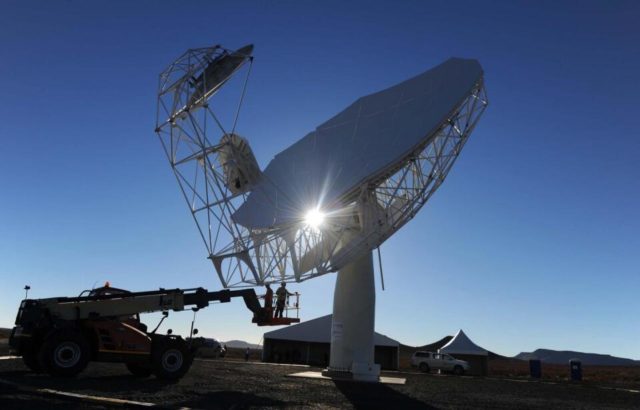Meanwhile, a new study using the radio telescope has produced a striking image showing a combination of cosmic features never before seen.
A LARGE galaxy group has been discovered with the MeerKAT telescope located in the Northern Cape.
The South Africa Radio Astronomy Observatory (SARAO) said on Wednesday that the group of 20 galaxies is likely the most neutral hydrogen gas-rich group ever discovered and that it is the first time this group has been identified.
Research scientist at the Ludwig Maximilians Maximilians Universität in Munich and co-chair of the MIGHTEE neutral hydrogen working group Dr Natasha Maddox said the MeerKat was the only telescope that managed to reveal the structure so clearly.
“This galaxy group sits in an area of sky that has been studied with many other telescopes. Galaxy environment strongly affects how galaxies change and grow, and observations of neutral hydrogen with MeerKAT give us a new observational window into structures like this.”
SARAO associate director of astronomy operations at the Inter-university Institute for Data Intensive Astronomy and co-chair of the MIGHTEE neutral hydrogen working group Dr Bradley Frank stated that the MeerKAT’s large field-of-view and wide bandwidth, coupled with excellent sensitivity and resolving power, made it a premium survey instrument to conduct a census of galaxies in a variety of environments.
This discovery has been published in the Monthly Notice of the Royal Astronomical Society.
Meanwhile, a new study using the MeerKAT radio telescope has produced a striking image showing a combination of cosmic features never before seen, including an elliptical galaxy rotating around a black hole with a mass of a billion suns.
The radio waves were detected by the MeerKAT telescope travelling through intergalactic space at the speed of light for 160 million years.
The SARAO indicated that the bright spines of the initially straight jets become unstable just outside the galaxy, where some of the electrons escape to create several faint radio “threads” below IC 4296.
“Between the bright jets and the outer lobes are smooth ‘ribbons’ filling channels excavated from the surrounding gas by defunct jets from an earlier period of activity. The ribbons are eventually stopped by intergalactic gas, nearly a million light-years from the central galaxy (a distance equal to 10 times the diameter of our Milky Way home galaxy), and form the ‘smoke rings’ visible in the left radio lobe.”








